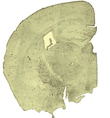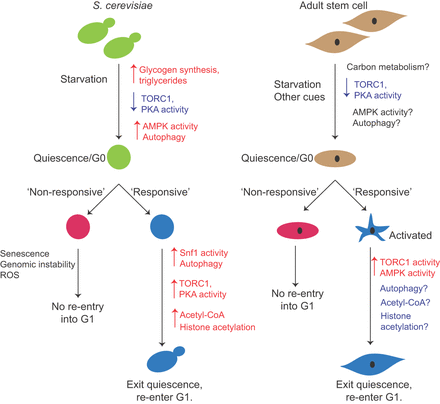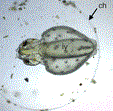From our sister journals- December 2015
Posted by the Node, on 17 December 2015
Here is some developmental biology-related content from other journals published by The Company of Biologists.

A mouse model for tuberous sclerosis complex
The a uthors present a mouse model for tuberous sclerosis complex in which the gene Tsc1 is ablated from eye-progenitor cells, leading to the classic hallmarks of the disease. This demonstrates a role for Tsc1 in regulating several aspects of the development of the visual-pathway. Read the paper here. [OPEN ACCESS]
uthors present a mouse model for tuberous sclerosis complex in which the gene Tsc1 is ablated from eye-progenitor cells, leading to the classic hallmarks of the disease. This demonstrates a role for Tsc1 in regulating several aspects of the development of the visual-pathway. Read the paper here. [OPEN ACCESS]
Roles for MAP3K1 in the development and survival of cochlear sensory hair cells
 Two papers show that homozygous mutations of the MAP3K1 serine/threonine kinase lead to early-onset profound hearing loss and degeneration of cochlear outer hair cells in mice, demonstrating the role of MAP3K1 in otic development. MAP3K1 is also revealed as a candidate gene for human sensorineural hearing loss. Read the papers here and here. [OPEN ACCESS]
Two papers show that homozygous mutations of the MAP3K1 serine/threonine kinase lead to early-onset profound hearing loss and degeneration of cochlear outer hair cells in mice, demonstrating the role of MAP3K1 in otic development. MAP3K1 is also revealed as a candidate gene for human sensorineural hearing loss. Read the papers here and here. [OPEN ACCESS]
Loss of TRPML1 leads to impaired myelination and reduced brain ferric iron
 Mucolipidosis type IV causes impaired motor and cognitive development, progressive vision loss and gastric achlorhydria, and is caused by mutations in MCOL1. Grishchuk and colleages report that Mcoln1−/− mice suffer developmental defects in brain myelination as a result of loss and deficient maturation of oligodendrocytes, possibly through impaired iron handling. Read the paper here. [OPEN ACCESS]
Mucolipidosis type IV causes impaired motor and cognitive development, progressive vision loss and gastric achlorhydria, and is caused by mutations in MCOL1. Grishchuk and colleages report that Mcoln1−/− mice suffer developmental defects in brain myelination as a result of loss and deficient maturation of oligodendrocytes, possibly through impaired iron handling. Read the paper here. [OPEN ACCESS]

Lessons from yeast for regenerative biology
 Dhawan and Laxman examine the key concepts underlying our understanding of stem cell quiescence that can be attributed to studies in yeast, and their implications for regenerative medicine. Read the article here.
Dhawan and Laxman examine the key concepts underlying our understanding of stem cell quiescence that can be attributed to studies in yeast, and their implications for regenerative medicine. Read the article here.
Rop is a regulator of dendrite growth
 Kim, Parrish and colleagues show that Rop forms a complex with the exocyst, and that this complex predominates in primary over terminal dendrites. Membrane-associated proteins, on the other hand, preferentially diffuse from primary dendrites into terminal ones, suggesting that diffusion supplies membranous material for terminal dendritic growth. Read the paper here.
Kim, Parrish and colleagues show that Rop forms a complex with the exocyst, and that this complex predominates in primary over terminal dendrites. Membrane-associated proteins, on the other hand, preferentially diffuse from primary dendrites into terminal ones, suggesting that diffusion supplies membranous material for terminal dendritic growth. Read the paper here.
The function of NRG1, ErB2 and ErB3 in human placental development
 ErB2 and ErB3 are two receptor tyrosine kinases expressed in the extravillous trophoblast (EVT) lineage in the placenta. Fock and colleagues demonstrate that neuregulin 1 (NRG1) promotes EVT formation and suppresses trophoblast apoptosis through the activation of ErB2 and ErB3. Read the paper here. [OPEN ACCESS]
ErB2 and ErB3 are two receptor tyrosine kinases expressed in the extravillous trophoblast (EVT) lineage in the placenta. Fock and colleagues demonstrate that neuregulin 1 (NRG1) promotes EVT formation and suppresses trophoblast apoptosis through the activation of ErB2 and ErB3. Read the paper here. [OPEN ACCESS]
Luman is a regulator of osteoclast differentiation
 Luman is an ER transmembrane protein that can undergo proteolysis and whose N-terminal fragment can act as a transcription factor. This study shows that Luman can regulate expression, localisation and stability of DC-STAMP, a downstream effector of RANKL, the protein that initiates osteoclastogenesis; making Luman a regulator of osteoclast differentiation. Read the paper here. [OPEN ACCESS]
Luman is an ER transmembrane protein that can undergo proteolysis and whose N-terminal fragment can act as a transcription factor. This study shows that Luman can regulate expression, localisation and stability of DC-STAMP, a downstream effector of RANKL, the protein that initiates osteoclastogenesis; making Luman a regulator of osteoclast differentiation. Read the paper here. [OPEN ACCESS]
Dsor1/MEK activates Wg/Wnt signalling
 Hall and Verheyen show that Dsor1, a Drosophila homolog of MEK that is activated by Ras, promotes transcription of Wg target genes by interacting with Armadillo and preventing its degradation. Ras-Dsor1 activity seems to be mediated by the insulin-like growth factor receptor. Read the paper here.
Hall and Verheyen show that Dsor1, a Drosophila homolog of MEK that is activated by Ras, promotes transcription of Wg target genes by interacting with Armadillo and preventing its degradation. Ras-Dsor1 activity seems to be mediated by the insulin-like growth factor receptor. Read the paper here.

Spawning behaviour of the Japanese flying squid
Puneet a and colleagues investigated the spawning behaviour of the Japanese flying squid, comparing eggs spawned in a tank with a temperature gradient with eggs spawned in a tank without a temperature gradient. Only eggs spawned in the tank with the temperature gradient survived. Paralarvae survived for ten days, allowing observation of advanced stage paralarvae. Read the paper here.
a and colleagues investigated the spawning behaviour of the Japanese flying squid, comparing eggs spawned in a tank with a temperature gradient with eggs spawned in a tank without a temperature gradient. Only eggs spawned in the tank with the temperature gradient survived. Paralarvae survived for ten days, allowing observation of advanced stage paralarvae. Read the paper here.


 (No Ratings Yet)
(No Ratings Yet)